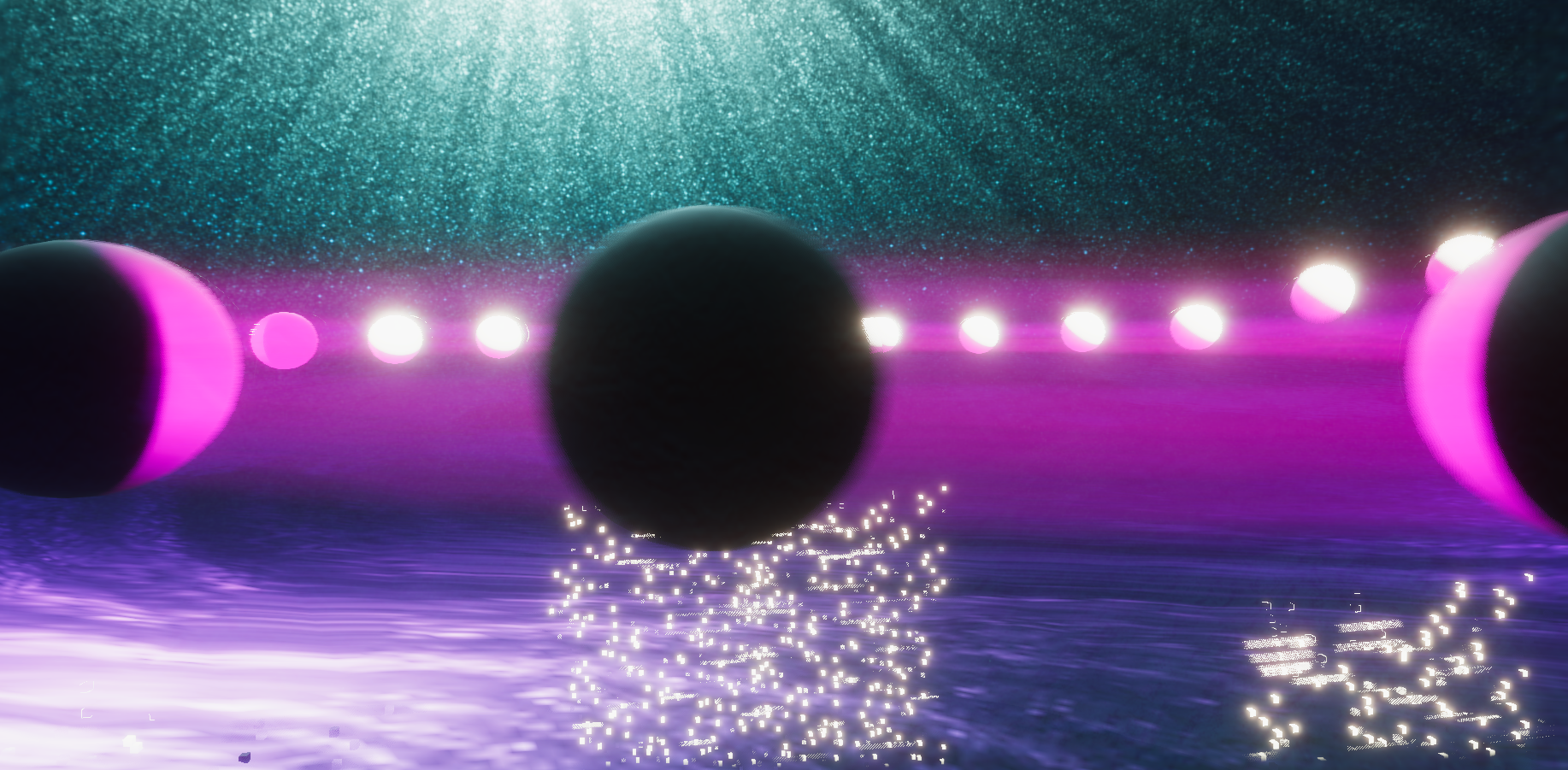I really wanted to create something resembling a blob, and after seeing something vaguely jellyfish-related on the internet, I realized that the components of a jellyfish make for the perfect audiovisualizer. The tendrils so naturally lend themselves to the waveform. For the spectrum, there are so many possibilities for the dome of the jellyfish, and (through a happy accident) I found that the iridiscent material I chose was perfect for a galaxy-like setting. Thus, I made my spectrum visualizer into a planetary orbit, with cosmic trails to represent the history.
This was a real challenge. At first, I thought I wanted to use shader graphs to track position, but then it turns out that those don't play well with code-instantiated trail renderers. Thus, I ended up having to go back to the localPosition strategy at the last minute and used shader graphs to give the planets an interesting texture. Constructing a water-based narrative (familiar to me from 220b) was another challenging yet interesting task. Water noises are humanistic and relatable and provide an expressive canvas on which one can paint vague tonal fragments (as I attempted to do).
Many thanks to Kunwoo and Ge for their help with this project! Apologies for the framerate on the final video; turns out even a gaming computer had some trouble with this one...
Controls are as follows:
WASD: move around
Mouse left/right/up/down: rotate view
Z and X: scale waveform down/up respectively


